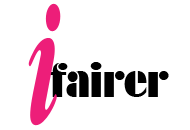2 of 2 parts
Study: Pretty food may seem healthier to consumers

As suspected, the difference in naturalness judgments drove the difference in healthiness judgments. Judgments of other aspects, like freshness or size, were unaffected. Experiments with different foods and prettiness manipulations returned the same pattern of results, suggesting that the effect is unlikely idiosyncratic to certain pictures.
Importantly, these healthiness judgments affect consumer behaviour. In a field experiment, people were willing to pay significantly more money for a pretty bell pepper than an ugly one, and a substantial portion of this boost in reservation prices was attributable to an analogous boost in healthiness judgments. In another study, even when people had financial incentives to correctly identify which of two foods contained fewer calories, they were more likely to declare a target food to be the lower calorie option when it was pretty than when it was ugly-even though this choice lost them money.
There are some key qualifications. First, the pretty=healthy effect is limited to classical aesthetics. "Expressive" aesthetics do not involve nature-like patterns, but instead please through imaginative execution of creative ideas, such as food cut into fun shapes or arranged to depict a scene. Second, the pretty=healthy bias can be muted by displaying a disclaimer next to the food reminding people that the food was artificially modified.
This effect of classical aesthetic principles has implications for marketers and public health advocates, albeit different ones. Hagen explains that "Classical aesthetics may be a costless and subtle new way to convey naturalness and healthfulness-attributes that consumers increasingly demand in food products. At the same time, pretty food presentation may optimistically distort nutrition estimates and negatively impact dietary decisions. Given these findings, policy-makers may want to consider modification disclaimers as an intervention or strengthen regulations around providing objective nutrition information with food images."
Mixed Bag
 DIY Loaded Potato Skins with Unique Toppings
DIY Loaded Potato Skins with Unique Toppings
Crispy, golden potato skins loaded with delicious toppings are the perfect appetizer, snack, or party food...... Astrology and Crystal Ball Gazing: Psychic Insights
Astrology and Crystal Ball Gazing: Psychic Insights
Astrology and crystal ball gazing are two powerful practices that have been used for centuries to unlock the...... How to Increase Blood Naturally: Simple Ways to Boost Hemoglobin Levels
How to Increase Blood Naturally: Simple Ways to Boost Hemoglobin Levels
Low hemoglobin levels or anemia can leave you feeling fatigued, weak, and drained. While it’s always...... Astrology and Tea Leaf Reading: Symbolic Interpretation
Astrology and Tea Leaf Reading: Symbolic Interpretation
Astrology and tea leaf reading are two intriguing forms of divination that allow us to explore the deeper ......
Most Popular
Dare To Share
 Fear or Fight
Fear or Fight
My fiance does not know about my son and I am afraid that he will leave me once he finds out about this
Read More... Shameful Regret
Shameful Regret
He is planning to divorce his wife and probably marry me. However, he has transferred the three parcels of land and a car they have into my name...
Read More... Lover or Brother
Lover or Brother
I am 20 years old and in a relationship with a guy aged 24 years. My boyfriend is a brother to my cousin's.......
Read More...
check outclick money scam review. Recently, new review of click money is posted on clickmoneyscam.com


 Previous
Previous